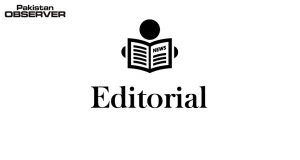THE Government is set to unfold the Strategic Trade Policy
Framework 2020-25 (STPF) and the Textile Policy 20-25
aimed at resolving problems being faced by the export sector and boost exports meaningfully. Advisor to Prime Minister on Commerce Abdul Razak Dawood, while briefing a high level meeting chaired by Prime Minister Imran Khan, said the policies are also aimed at ensuring continuity, enhancing efficiency of the local industry to meet international standards and prioritizing 26 sectors for export promotion.
We have been preparing and announcing Strategic Trade Policy Frameworks since 2009 with ambitious goals and targets but a review of them would reveal that none of them could produce the desired results because of lack of aggressive follow-up and discontinuity in policies. No doubt, STPF 2009 12 and STPF 2012-15 saw some progress towards removal of procedural bottlenecks but the STPF 2015-18 miserably failed to show any substantive move for achieving annual export target of $35 billion and in fact exports witnessed a downward trend during the period and afterwards. Similarly, it could not produce concrete results as far as stated objectives of improvement in export competitiveness, transition from factor driven economy to efficiency driven and innovation driven economy and increasing share in regional trade through key enablers of competitiveness compliance to standards policy environment and market access were concerned. The Commerce Ministry had prepared a Strategic Trade Policy Framework 2018-23 envisaging an export target of $46 billion but one can judge the seriousness of the Government that the policy remained unattended for long time and now a new framework is under preparation. The issues hindering our export sector and their solutions are known to all and what we need is practical steps to address them. These include product sophistication and diversification (research and development, value addition and branding); market access (enhancing share in existing markets exploring new markets trade diplomacy and regionalism); institutional development and; strengthening (restructuring capacity building and new institutions) and trade facilitation (reducing cost of doing business, standardization and regulatory measures). The focus should be on manufacturing sector by offering incentives to local and international manufacturers who opt to conduct production activities within the country’s borders. Security environment has already improved due to hard work of our armed forces and this would serve as an additional attraction for prospective investors provided we offer right kind of incentives to them.









